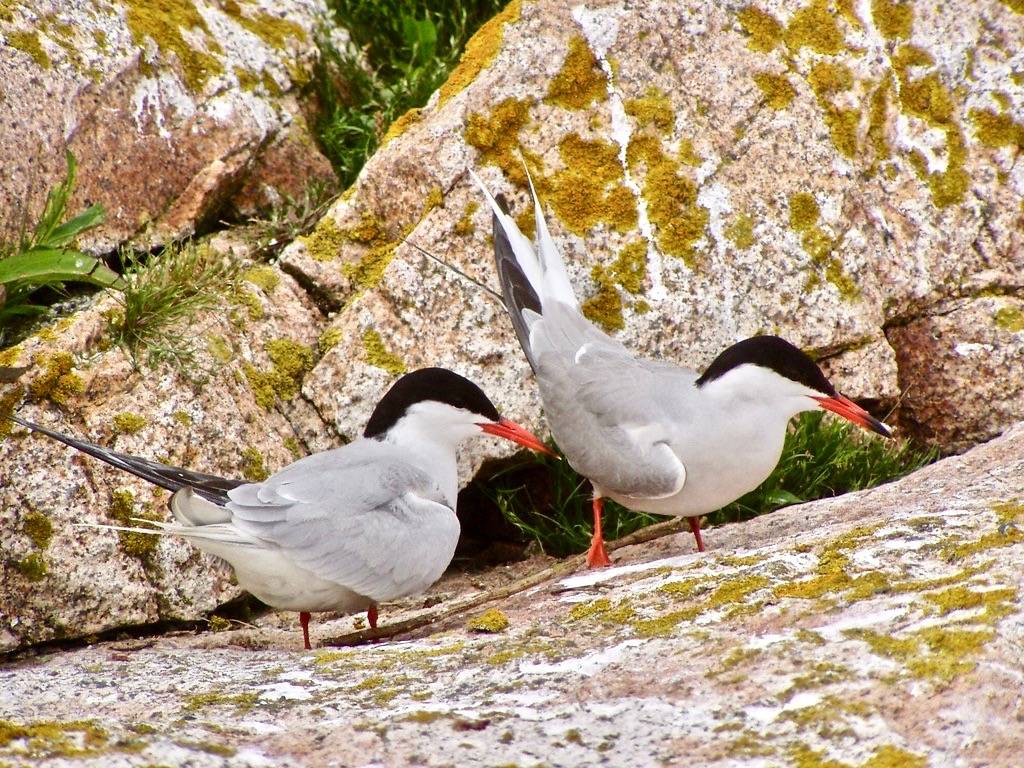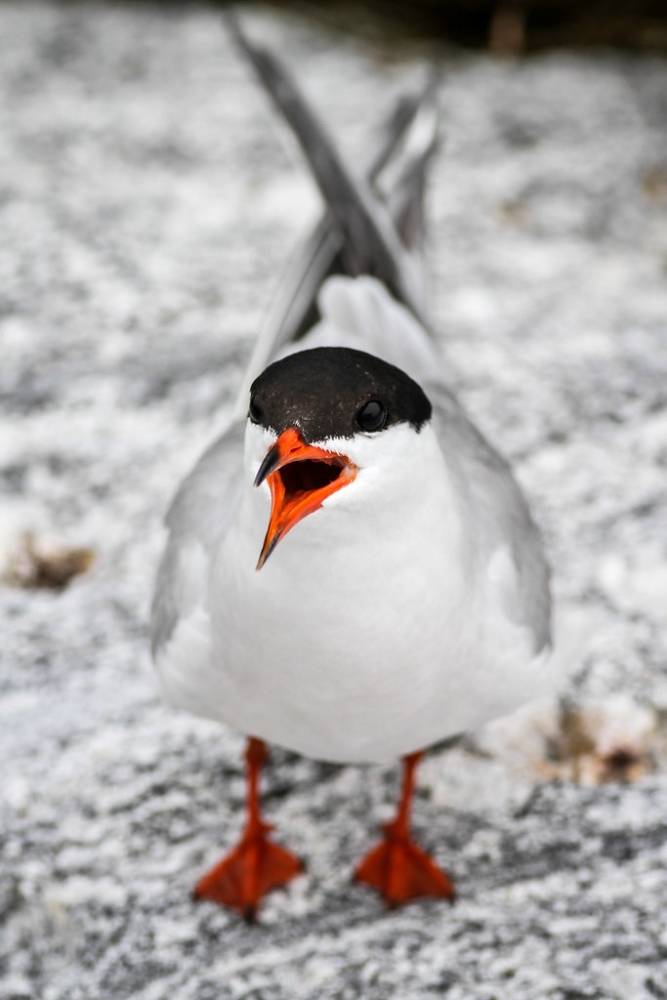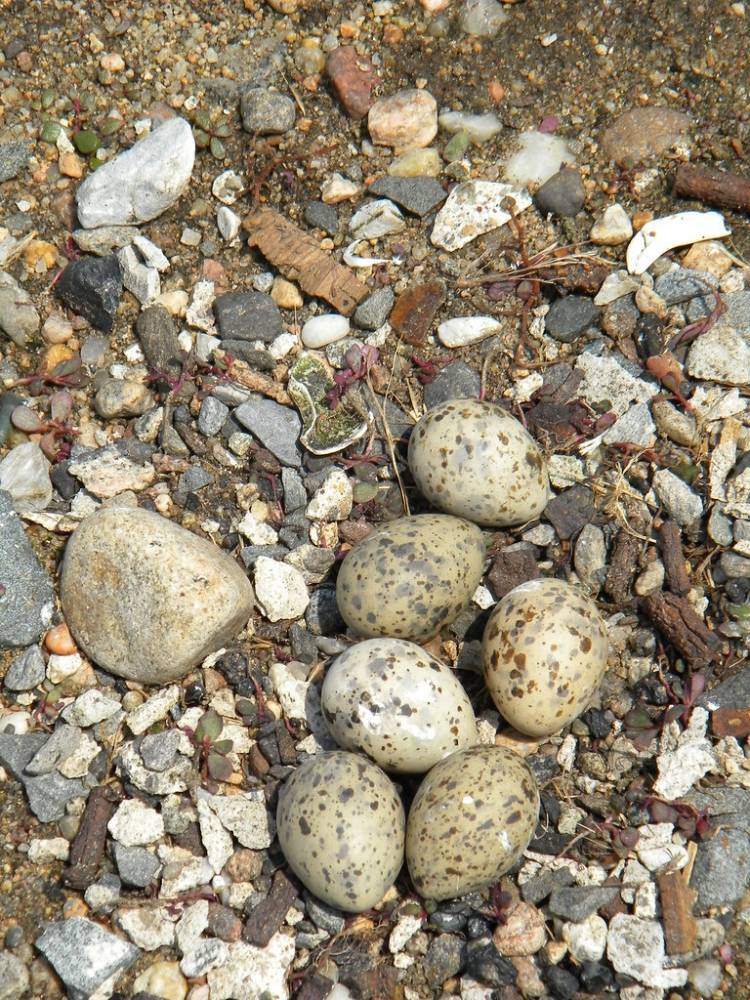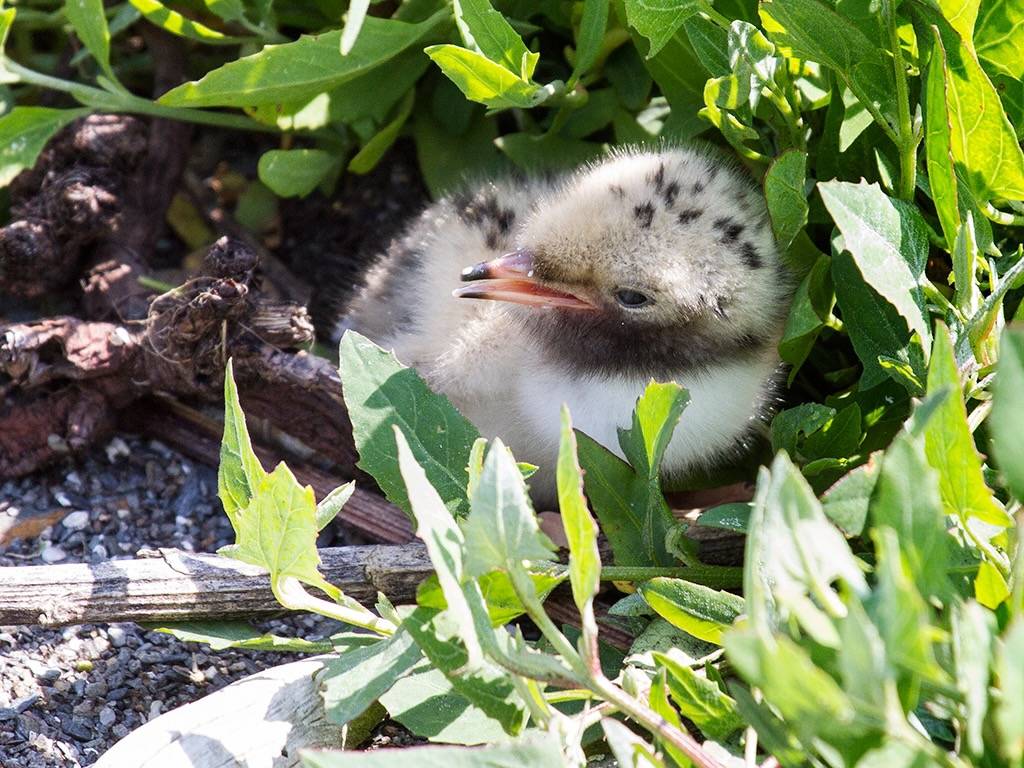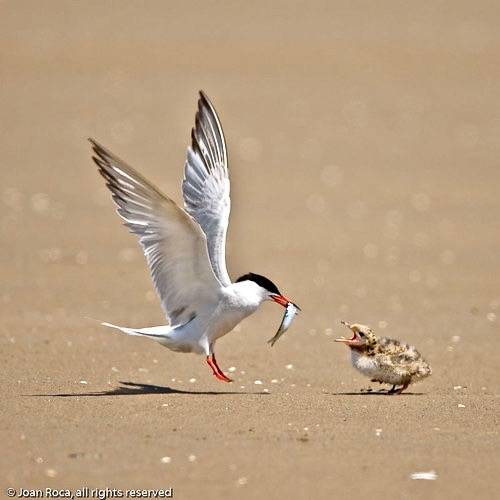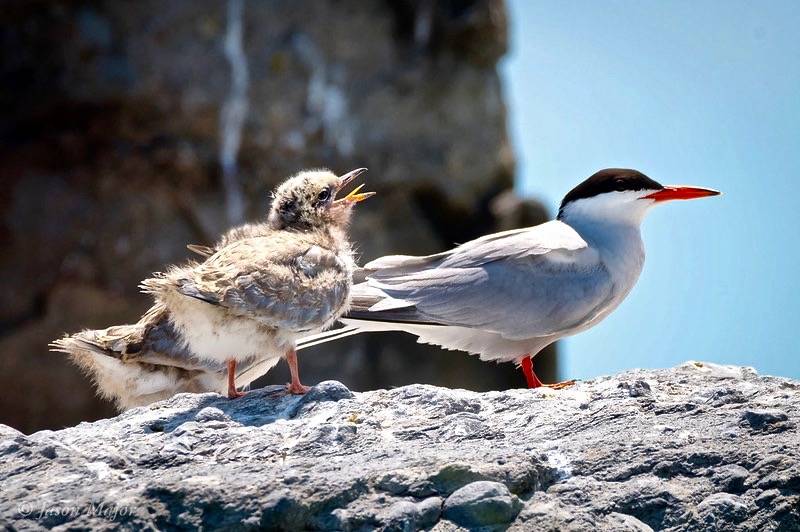Common Tern
Common Terns can be seen at Salter Grove from May through August along the Causeway or the Marsh Trail. Their numbers in the park fluctuate from year to year.
Early in the season, a noisy flock may land on the rocky islets south of Rock Island, but there is no certainty that they will stay to breed. However, even when the flock moves elsewhere to establish a breeding colony, occasional individuals can still be observed diving for small fish in North and South Coves. Their piercing calls can be heard from the woods along the eastern arm of the Upland Trail.
In 2019, over thirty Common Terns established a breeding colony on the islets south of Rock Island and in the process displaced a family of American Oystercatchers. The adult oystercatchers remained in the area until they left for the season but the three newly hatched oystercatcher chicks were not observed again after the terns arrived.
The islet has not been a favorable breeding site for terns either. From 2020 onwards, fewer than a dozen terns have returned and few have established nesting sites. At low tide, the islet is accessible to small mammals such as rats and the American Mink which are known to be predators of eggs and nestlings.
Common Terns breed from the subarctic to the temperate regions in Asia, Europe, and North America, including areas in north Africa. It is a long-distance migrant and travels great distances to winter in coastal sub-tropical and tropical regions.
During the nineteenth century, Common Terns in both Europe and North America were decimated by both the collection of eggs, and from an overwhelming fashion craze. Feathers from millions of egrets, grebes, herons, and even entire stuffed terns were used to decorate women's hats. These species made easy targets because they nested in large colonies.
Fortunately, not all women succumbed to this fad and many conservation minded individuals rallied support for legislation to stop this practice. The Migratory Bird Treaty Act of 1918 made it unlawful to collect any migratory bird for any purpose.
For more information:
https://www.allaboutbirds.org/guide/Common_Tern
https://www.audubon.org/field-guide/bird/common-tern
https://en.wikipedia.org/wiki/Common_tern
http://www.biokids.umich.edu/critters/Sterna_hirundo/
https://www.npr.org/sections/npr-history-dept/2015/07/15/422860307/hats-off-to-women-who-saved-the-birds
https://www.fws.gov/law/migratory-bird-treaty-act-1918







